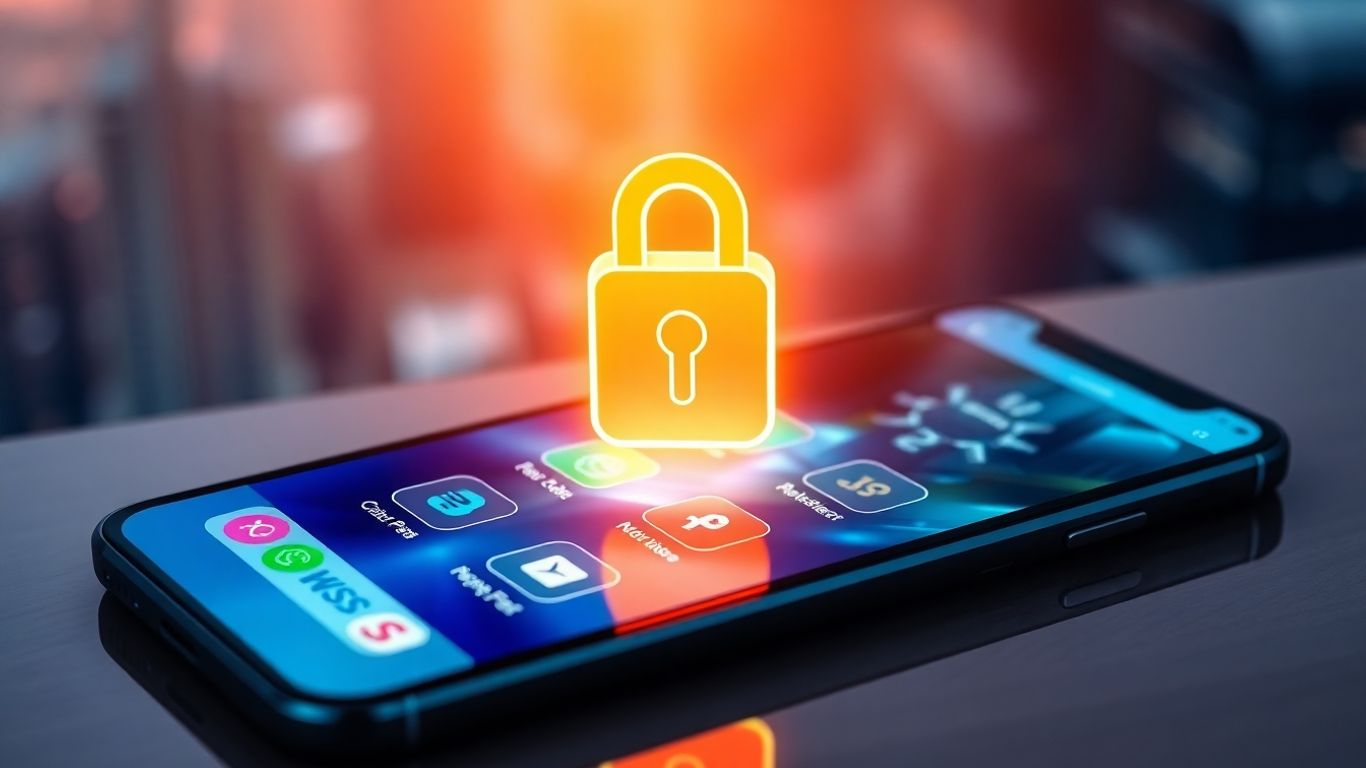[ newsletter ]
Stay ahead of Web3 threats—subscribe to our newsletter for the latest in blockchain security insights and updates.
Thank you! Your submission has been received!
Oops! Something went wrong. Please try again.
Master e wallet app development in 2025. Our guide covers scope, tech stack, security, testing, and launch for your digital wallet app.





So, you're thinking about building your own digital wallet app? It's a big undertaking, for sure, especially in 2025 with the mobile payments market booming. People expect their money apps to be super fast and totally secure, like those big names out there. It’s not just about sending money anymore; it’s about making things smooth and trustworthy for everyone. We're going to break down how to get this done, from figuring out what your app should even do, to making sure it doesn't get hacked and that users actually stick around. Let's get into it.
Before you even think about code, you need to get super clear on what your e-wallet app is actually going to do. This isn't just about listing features; it's about understanding who you're building it for and what problems you're solving. Getting this right from the start is the single biggest factor in keeping your project on track and within budget. Think of it like planning a trip – you wouldn't just start driving without knowing your destination, right?
So, who are you building this for? Are they tech-savvy crypto enthusiasts, everyday shoppers looking for convenience, or maybe small business owners needing to manage payments? Your target audience dictates everything. A wallet for gamers might need in-app purchase integrations, while one for international remittances will focus on low fees and fast transfers.
Here's a quick way to think about it:
Once you know your audience and their main pain points, you can start matching features. Don't just throw in every cool idea you have. Focus on what directly addresses the user's needs. For instance, if your users are constantly on the go and need quick payments, Near Field Communication (NFC) or QR code scanning becomes a high priority. If they're concerned about security, robust biometric authentication (like fingerprint or facial recognition) is a must.
Consider these common e-wallet features and how they might fit:
Scope creep is the silent killer of app projects. It happens when new features or requirements are added after the project has already started, often without a proper evaluation of their impact on time and budget. To avoid this, have a clear, documented scope from day one. Any new feature requests should be carefully reviewed against the original goals and user needs. If a feature is truly valuable but wasn't in the initial plan, it might be better to save it for a future update rather than derailing the current development cycle.
A well-defined scope acts as your project's compass. It guides every decision, from technology choices to feature prioritization, ensuring you're always moving towards your intended destination without getting lost in unnecessary detours. Stick to it, and your development process will be much smoother.
Picking the right tools for your e-wallet app is a big deal. It's not just about what looks cool; it's about making sure your app can handle what users throw at it, stays secure, and can grow later on. Think of it like building a house – you wouldn't use flimsy materials for the foundation, right? The same applies here. The tech stack you choose directly impacts your app's performance, security, and how easily you can add new features down the line.
When you're building an e-wallet, speed and the ability to handle lots of users are super important. You want your app to feel snappy, whether someone is just checking their balance or sending money across the country. Frameworks play a huge role here.
The goal is to pick technologies that your team knows well and that can grow with your user base. Trying to build a massive app with a stack nobody on your team understands is a recipe for disaster.
If your e-wallet involves cryptocurrencies or needs an extra layer of trust and transparency for certain transactions, blockchain technology becomes a key consideration. It's not always necessary for every e-wallet, but when it is, it's a game-changer for security.
Using blockchain means you're building on a system designed for secure, verifiable transactions, which can be a major selling point for users concerned about the safety of their digital assets.
Ultimately, the best tech stack is one your team can actually build with and that can handle your expected user traffic. A fancy, cutting-edge framework is useless if your developers struggle to implement it or if it can't cope when your app becomes popular.
When you're building an e-wallet app, security and following the rules aren't just afterthoughts; they're the bedrock. Think about it: people are trusting you with their money. If that trust is broken, your app is done for. We're talking about protecting sensitive financial details from all sorts of bad actors out there. It’s a big responsibility, and getting it wrong can lead to some serious trouble, not to mention a lot of unhappy users.
First off, you need to lock down the data. This means using strong encryption methods to scramble any information users send or receive. It's like putting your data in a super secure vault that only authorized people can open. On top of that, biometrics are becoming standard. We're talking about fingerprint scans and facial recognition. These make it way harder for someone to just pick up a phone and start spending money that isn't theirs. These security layers work together to create a strong defense against unauthorized access.
Beyond just protecting data, you have to play by the rules. For payment processing, the Payment Card Industry Data Security Standard (PCI-DSS) is a big one. It sets out how companies should handle cardholder information. Keeping up with these standards, especially with updates like the PCI DSS 4.0 changes that are now fully enforceable, is key to avoiding hefty fines and maintaining credibility. Then there's GDPR, which is all about protecting personal data for users in Europe. Different regions have their own rules, and you need to be aware of them all.
To really build trust, especially when dealing with financial transactions, you need to know who your users are. This is where Know Your Customer (KYC) verification comes in. It's a process that helps confirm a user's identity. While it might seem like an extra step for users, it's vital for preventing fraud and meeting regulatory requirements. Making this process as smooth and quick as possible is a win-win. Users get verified without too much hassle, and your app stays compliant and secure.
Building trust is an ongoing effort. It's not just about the initial setup; it's about consistently demonstrating that you take user security and privacy seriously through every feature and update.

So, you've got your plan, picked your tech, and sorted out security. Now comes the part where you actually build the thing and then put it through its paces. This is where your digital wallet starts to take shape, and testing isn't just a step; it's a marathon.
Starting with a Minimum Viable Product, or MVP, is a smart move. Think of it as the core of your wallet – the absolute must-have features that let users do the main thing they need to do, like send or receive money. This isn't the time for all the bells and whistles. The goal here is to get something functional into the hands of early users quickly. This helps you learn what works and what doesn't without wasting tons of time and money on features nobody wants. It’s about getting that basic version out there, seeing how people use it, and then building on that feedback.
Once you have your MVP, you need to connect it to the outside world. This means integrating with payment gateways, banks, or other financial services through APIs. These connections need to be solid. Think about how your app will handle lots of people trying to use it at the same time, especially during busy periods like holidays or big sales. Stress-testing is key here. You want to push your app to its limits to see where it breaks. If 70% of users ditch apps that are slow or crash, you don't want to be that app. Testing NFC or QR code payments across different devices is also a must for in-person transactions.
Testing isn't a one-and-done deal. You need to test everything, from basic functions to security vulnerabilities. This involves different types of testing:
Rigorous testing means simulating real-world scenarios, including unexpected user actions and network issues, to catch problems before they impact your users. It's about building confidence that your wallet is reliable.
Tools like Postman can help check your APIs, and using platforms like BrowserStack lets you test on a wide range of devices. For security, tools like OWASP ZAP or Burp Suite are common. The idea is to find and fix bugs, performance bottlenecks, and security holes so that when your wallet goes live, it works smoothly and keeps users' trust.

So, you've built this amazing e-wallet app. It's got all the bells and whistles, the security is top-notch, and you're ready to show it to the world. But wait, the work isn't over yet. Launching and keeping an eye on things is just as important as the building part.
First things first, where are you going to host this thing? You can't just stick it on a single server and hope for the best, especially with financial transactions involved. Think about cloud platforms like Amazon Web Services (AWS) or Google Cloud. They're built to handle a lot of traffic and can grow with your user base. This means if you suddenly get a rush of users, maybe during a big sale or holiday, your app won't just crash. It's like having a restaurant that can instantly add more tables when it gets busy – nobody likes waiting.
Once your app is live, you need to watch it like a hawk. This isn't just about seeing if it's online; it's about making sure it's working right and staying safe. Tools like Datadog or New Relic can give you real-time updates on how your app is performing. You'll want to set up alerts for anything unusual, like a sudden spike in errors or weird network activity. Catching problems early is key to keeping users happy and their money safe. Imagine a user trying to make a payment and it just hangs – that's a quick way to lose them.
Here's a quick look at what to monitor:
The world of finance and data privacy changes constantly. New regulations pop up, and security threats evolve. You can't just launch your app and forget about it. You'll need to plan for regular updates. These aren't just for adding new features; they're often necessary to stay compliant with laws like GDPR or PCI-DSS. Think of it like getting your car inspected – it's a necessary step to keep everything running smoothly and legally. Failing to update can lead to hefty fines and a big hit to your reputation.
Keeping your e-wallet app up-to-date is a continuous process. It involves not just fixing bugs but also adapting to new security challenges and regulatory requirements. This ongoing maintenance is what builds long-term trust with your users and keeps your application competitive in the market.
Building a digital wallet app means stepping into a busy market, and let's be real, things can go sideways fast. You've got to think about what could mess things up before it actually does. It’s not just about having cool features; it’s about making sure your app stays safe and keeps users coming back.
Security breaches are a huge worry. Nobody wants their users' money or data compromised. A solid way to handle this is by using tokenization. Instead of storing sensitive card details directly, you replace them with a unique token. This makes it way harder for hackers to get anything useful even if they manage to get in. Think of it like swapping your actual credit card number for a temporary, one-time-use code for each transaction. Regular security checks and audits are also super important, kind of like having a security guard patrol your building. This helps catch weak spots before someone else does. For Android app security, there are specific strategies to look into critical threats.
Nobody wants to deal with fines from regulators. It’s expensive and a massive headache. Getting ahead of compliance rules like PCI-DSS (for handling card payments) and GDPR (for data privacy) from the get-go is key. This means building these requirements into your app from the start, not as an afterthought. It might add a bit to the initial development, but it saves you from potentially massive penalties down the line. Streamlining Know Your Customer (KYC) verification processes early on also builds trust and keeps you on the right side of the law.
Even if your app is super secure and compliant, if it's clunky and hard to use, people will just leave. A smooth user experience (UX) is vital for keeping users around. This means making things like sending money, checking balances, or adding funds as simple and quick as possible. Testing out common user flows, like the checkout process, to remove any friction points is a good idea. A clunky interface can lead to users dropping off, and nobody wants that. Focusing on a clean design and fast performance can make a big difference in keeping people engaged with your app.
Building a digital wallet app is a balancing act. You need top-notch security and to follow all the rules, but it also has to be easy and pleasant for people to use. Getting these right from the start means fewer headaches later and happier users in the long run.
So, building a digital wallet app in 2025 is definitely a big undertaking, but it’s also a really smart move for businesses looking to get ahead. We’ve walked through the whole process, from figuring out exactly what your app should do and picking the right tech, to making sure it’s super secure and testing it like crazy. Remember, keeping things simple, focusing on what users really need, and staying on top of security are key. It’s not just about making a place for payments; it’s about building trust and making life easier for your customers. With the mobile payments world only getting bigger, a well-made digital wallet can really set you apart. It’s your chance to create something people will actually want to use every day.
Before you start building, it's super important to figure out exactly what your app will do and who will use it. Think about if it's just for sending money between friends or if it needs to handle special digital money like Bitcoin. Knowing your main goal and who your customers are helps you choose the right features and stops you from adding too much stuff later, which can make things complicated and costly.
Choosing the right tools, like programming languages and software, is key. For apps that need to be super fast and handle lots of users, some tools work better than others. If you're thinking about digital money, using special tech called blockchain can make transactions really safe. Also, think about what your team already knows how to use, as this can speed things up.
Security is a huge deal for e-wallets. You need to protect people's money and personal information. This means using strong locks like encryption and making sure only the right person can get in, maybe using their fingerprint or face. It's also vital to follow the rules set by governments and payment companies to avoid big fines and keep users trusting your app.
An MVP is like a basic version of your app that has just enough features to be useful to early customers. It helps you test your main ideas without spending too much time or money. You can get feedback from real users and then add more features later, making sure you're building something people actually want.
Once your app is ready, you need to put it out there for people to use. It's best to use special online services that can handle many users at once. After launching, you have to keep a close eye on it to make sure it's always working, stays safe from hackers, and fix any problems quickly. Also, you'll need to release updates to keep it running smoothly and follow any new rules.
The main risks include security problems, like hackers trying to steal information or money. Another big risk is not following the rules, which can lead to heavy fines. Lastly, if your app is slow or hard to use, people might stop using it. To avoid these, you need to build strong security from the start, prepare for rules early on, and make sure the app is easy and fast for everyone.


